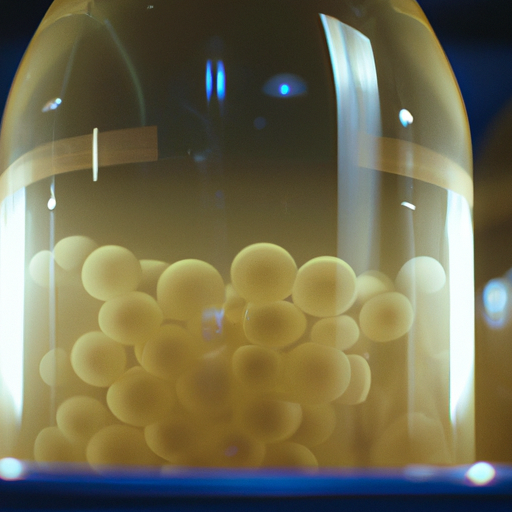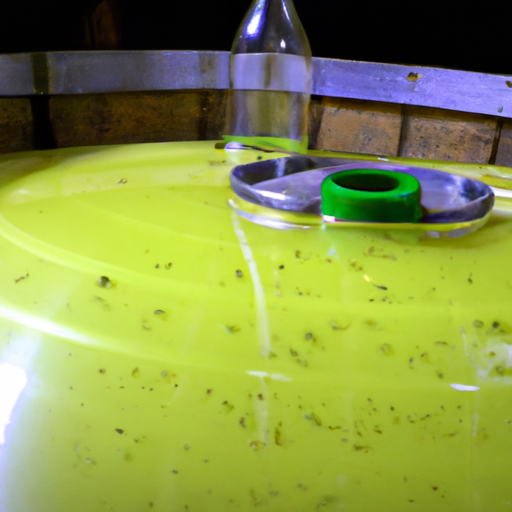
The Art of Oak Aging: Enhancing Chardonnay’s Complexity and Flavor
Preserving and Maturing Chardonnay for Future Delight
Chardonnay, one of the most popular white wine varietals, is known for its versatility and ability to express a wide range of flavors and aromas. While it can be enjoyed young and fresh, many wine enthusiasts appreciate the added complexity and depth that comes with aging Chardonnay in oak barrels. This process, known as oak aging, is an art that requires careful consideration and expertise to achieve the desired results.
Oak aging is a technique that has been used for centuries to enhance the flavor and complexity of wines. The use of oak barrels imparts unique characteristics to the wine, such as vanilla, spice, and toast, while also allowing for controlled oxidation. This process can help to soften the acidity and tannins in the wine, resulting in a smoother and more balanced final product.
When it comes to oak aging Chardonnay, winemakers have a variety of options to choose from. The type of oak used, whether it be French, American, or Hungarian, can have a significant impact on the flavor profile of the wine. French oak tends to lend more subtle flavors, while American oak can impart stronger vanilla and coconut notes. Hungarian oak falls somewhere in between, offering a balance of both.
In addition to the type of oak, winemakers must also consider the level of toast on the barrels. Light toasting can enhance the fruit flavors in the wine, while heavy toasting can add smoky and caramelized notes. The choice of toast level depends on the desired flavor profile and the characteristics of the grapes used.
Once the oak barrels have been selected, the winemaking process begins. The Chardonnay grapes are harvested and gently pressed to extract the juice, which is then fermented in stainless steel tanks or oak barrels. After fermentation, the wine is transferred to oak barrels for aging.
During the aging process, the wine undergoes a series of chemical reactions that contribute to its development and maturation. The oak barrels allow for a slow and controlled exchange of oxygen, which helps to soften the wine and develop its flavors. Over time, the wine absorbs compounds from the oak, such as tannins and lignins, which contribute to its structure and complexity.
The length of time that Chardonnay is aged in oak barrels can vary depending on the desired style of the wine. Some winemakers choose to age their Chardonnay for only a few months, while others may opt for several years. The aging process allows the wine to develop and evolve, resulting in a more nuanced and sophisticated final product.
Once the oak aging process is complete, the wine is carefully bottled and stored to preserve its flavors and aromas. Proper storage conditions, such as temperature and humidity control, are essential to ensure that the wine continues to mature and develop in the bottle.
When it comes time to enjoy a bottle of oak-aged Chardonnay, it is important to consider the appropriate serving temperature. Chardonnay is best served slightly chilled, around 50-55 degrees Fahrenheit, to allow its flavors and aromas to shine.
In conclusion, oak aging is a crucial step in the winemaking process that can greatly enhance the complexity and flavor of Chardonnay. The choice of oak, toast level, and aging time all play a role in shaping the final product. With careful consideration and expertise, winemakers can create Chardonnays that are not only enjoyable in their youth but also have the potential to age gracefully and provide future delight.
Unveiling the Secrets of Bottle Aging: How Time Transforms Chardonnay

Preserving and Maturing Chardonnay for Future Delight
Chardonnay, one of the most popular white wine varietals, is known for its versatility and ability to age gracefully. While many wine enthusiasts are familiar with the concept of aging red wines, the idea of aging white wines, particularly Chardonnay, may seem foreign. However, when properly preserved and matured, Chardonnay can develop complex flavors and aromas that are truly delightful.
The process of bottle aging Chardonnay involves allowing the wine to rest in a controlled environment for an extended period. This allows the wine to undergo chemical reactions that enhance its flavor profile. During this time, the wine’s acidity softens, and its fruit flavors become more pronounced. Additionally, the oak characteristics, often imparted during the winemaking process, integrate more harmoniously with the wine, resulting in a smoother and more balanced taste.
To preserve Chardonnay for aging, it is crucial to store the bottles in optimal conditions. The ideal temperature for aging Chardonnay is around 55 degrees Fahrenheit, with a humidity level of 70-80%. This ensures that the wine ages slowly and consistently, preventing premature oxidation or spoilage. It is also important to store the bottles horizontally, allowing the wine to remain in contact with the cork, which helps maintain its integrity and prevents air from entering the bottle.
As Chardonnay ages, it undergoes a series of transformations that contribute to its unique character. Initially, the wine may appear bright and vibrant, with fresh fruit flavors and crisp acidity. However, as time passes, the wine’s color deepens, taking on golden hues. The fruit flavors evolve into more complex notes of baked apple, pear, and tropical fruits, while the acidity mellows, creating a smoother mouthfeel.
One of the key factors that contribute to the aging potential of Chardonnay is the presence of malic acid. Malic acid, commonly found in green apples, is responsible for the wine’s initial tartness. Over time, malic acid naturally converts into lactic acid through a process called malolactic fermentation. This transformation softens the wine’s acidity and adds a creamy texture, enhancing its overall complexity.
Another crucial element in the aging process is the influence of oak. Many Chardonnays are aged in oak barrels, which impart distinct flavors and aromas to the wine. Initially, the oak characteristics may dominate, with notes of vanilla, toast, and spice. However, with time, these flavors integrate more seamlessly, becoming a harmonious part of the wine’s profile. The oak also contributes to the wine’s ability to age gracefully, providing structure and depth.
It is important to note that not all Chardonnays are suitable for aging. Some Chardonnays are meant to be enjoyed in their youth, with their vibrant fruit flavors and refreshing acidity. However, if you have a bottle of Chardonnay that is well-suited for aging, it can be a rewarding experience to witness its evolution over time.
In conclusion, the process of bottle aging Chardonnay allows the wine to develop complex flavors and aromas that are truly delightful. By preserving Chardonnay in optimal conditions and allowing it to mature, the wine’s acidity softens, its fruit flavors become more pronounced, and the oak characteristics integrate harmoniously. With time, Chardonnay undergoes a series of transformations that contribute to its unique character, resulting in a wine that is rich, complex, and thoroughly enjoyable. So, if you have a bottle of Chardonnay that is suitable for aging, consider setting it aside and allowing it to mature for future delight.
Exploring the World of Chardonnay Preservation Techniques: From Cellaring to Refrigeration
Preserving and Maturing Chardonnay for Future Delight
Chardonnay, a popular white wine known for its versatility and wide range of flavors, is a favorite among wine enthusiasts. Whether you prefer a crisp and fruity Chardonnay or a rich and buttery one, preserving and maturing this wine properly is essential to ensure its future delight. In this article, we will explore the world of Chardonnay preservation techniques, from cellaring to refrigeration.
Cellaring, also known as aging, is a traditional method of preserving Chardonnay. This technique involves storing the wine in a cool, dark, and humid environment for an extended period. The ideal temperature for cellaring Chardonnay is around 55 degrees Fahrenheit, with a humidity level of 70-80%. These conditions allow the wine to mature slowly and develop complex flavors and aromas over time.
When cellaring Chardonnay, it is crucial to choose the right bottles. Opt for high-quality wines with good aging potential. Look for Chardonnays that have been aged in oak barrels, as they tend to age better than those aged in stainless steel. Additionally, consider the vintage of the wine. Chardonnays from cooler vintages often have higher acidity and can age gracefully.
Once you have selected the right bottles, store them horizontally to keep the cork moist and prevent oxidation. This position also helps the wine age evenly. Avoid storing Chardonnay bottles near strong odors, as they can seep into the wine and affect its flavor. Regularly check the bottles for any signs of leakage or spoilage, as this can ruin the aging process.
While cellaring is a traditional method, refrigeration has gained popularity in recent years as a way to preserve Chardonnay. Refrigeration involves storing the wine at a lower temperature, typically between 45-50 degrees Fahrenheit. This technique is ideal for those who prefer a fresher and more vibrant style of Chardonnay.
Refrigeration slows down the aging process and helps preserve the wine’s fruitiness and acidity. It is particularly beneficial for unoaked or lightly oaked Chardonnays, as it prevents the wine from becoming overly oxidized. However, it is important to note that refrigeration can also inhibit the development of complex flavors and aromas that come with aging.
When refrigerating Chardonnay, it is crucial to keep the bottles upright to prevent the cork from drying out. Unlike cellaring, refrigeration does not require high humidity levels. However, it is still important to store the wine away from strong odors to maintain its integrity.
In addition to cellaring and refrigeration, there are other preservation techniques worth exploring. Vacuum sealing, for example, involves removing the air from the bottle to prevent oxidation. This method is useful for preserving opened bottles of Chardonnay for a short period. Another technique is using inert gas, such as argon or nitrogen, to create a protective layer on top of the wine, preventing contact with oxygen.
In conclusion, preserving and maturing Chardonnay requires careful consideration of various techniques. Cellaring allows the wine to develop complex flavors and aromas over time, while refrigeration preserves its freshness and vibrancy. Vacuum sealing and inert gas can also be used to preserve opened bottles. Whichever method you choose, remember to store the wine in the right conditions and regularly monitor its progress. By doing so, you can ensure that your Chardonnay will bring delight to your palate for years to come.






